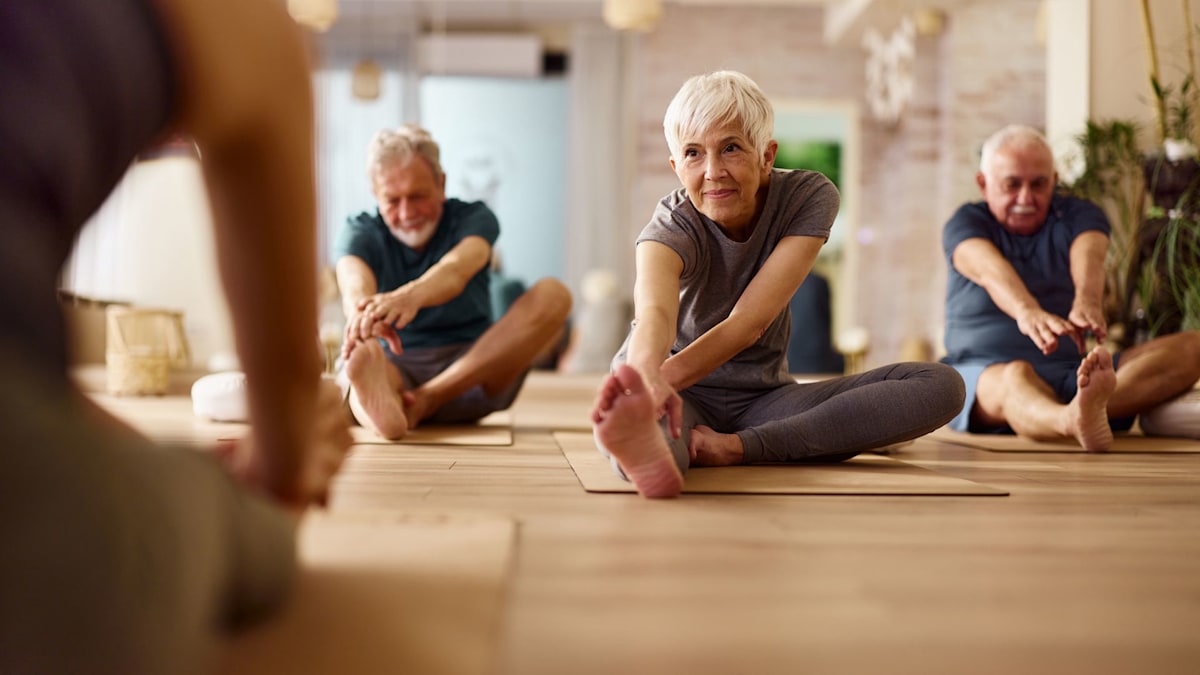Health
Discover Effective Low-Impact Exercises for Stronger Aging

As people enter their 50s and 60s, maintaining strength and fitness becomes increasingly important. Experts emphasize the benefits of low-impact exercises, which provide an effective way to stay fit while minimizing the risk of injury. According to Emily Schofield, a certified personal trainer and regional gym manager at Ultimate Performance Los Angeles, low-impact workouts can help individuals maintain their strength without the strain often associated with high-impact activities.
Low-impact exercises are particularly recommended for older adults due to their ability to reduce stress on joints and muscles. Schofield notes that while the term “low-impact” may imply a less intense workout, it does not mean sacrificing effectiveness. Many individuals in this age group can still use weights and engage in rigorous routines without risking their health.
Understanding the Benefits of Low-Impact Workouts
Health professionals highlight several reasons why low-impact exercises are beneficial for older adults. As the body ages, the risk of injury increases, making it essential to choose activities that protect joints. Low-impact workouts typically involve movements that do not put excessive pressure on the body, promoting longevity in fitness routines.
Schofield points out that exercises like swimming, cycling, and certain strength training routines allow individuals to build muscle and endurance safely. These activities not only enhance physical fitness but also contribute positively to mental health. Regular exercise is known to improve mood and cognitive function, which is crucial as people age.
Many people believe that engaging in low-impact exercise means they must abandon traditional strength training. This is not the case, according to Schofield. She encourages those in their 50s and 60s to incorporate weight training into their routines, as long as they do so safely. With proper guidance and technique, dumbbells can still play a vital role in maintaining strength.
Recommended Low-Impact Activities
There are numerous low-impact exercises that can be adapted to fit various fitness levels and preferences. Schofield recommends several effective options:
1. **Swimming**: This full-body workout is gentle on the joints while providing resistance that builds strength and endurance.
2. **Cycling**: Whether on a stationary bike or outdoors, cycling offers cardiovascular benefits while minimizing joint stress.
3. **Yoga**: This practice enhances flexibility and balance, which are essential for preventing falls and injuries in older adults.
4. **Pilates**: Focused on core strength and stability, Pilates can help improve posture and overall body strength.
5. **Light Weight Training**: Using moderate weights, individuals can safely build muscle without overexerting themselves.
Each of these activities can be tailored to individual abilities and preferences, making them accessible for a wide range of fitness levels.
In conclusion, staying strong and fit in one’s 50s and 60s is achievable with the right approach to exercise. By focusing on low-impact workouts, individuals can maintain their strength, enhance their overall health, and enjoy the benefits of an active lifestyle. As Schofield emphasizes, there is no need to give up on strength training; instead, it is about finding the right balance to ensure safety and effectiveness in fitness routines.
-

 Health2 months ago
Health2 months agoNeurologist Warns Excessive Use of Supplements Can Harm Brain
-

 Health2 months ago
Health2 months agoFiona Phillips’ Husband Shares Heartfelt Update on Her Alzheimer’s Journey
-

 Science2 weeks ago
Science2 weeks agoBrian Cox Addresses Claims of Alien Probe in 3I/ATLAS Discovery
-

 Science1 week ago
Science1 week agoNASA Investigates Unusual Comet 3I/ATLAS; New Findings Emerge
-

 Science1 week ago
Science1 week agoScientists Examine 3I/ATLAS: Alien Artifact or Cosmic Oddity?
-

 Entertainment4 months ago
Entertainment4 months agoKerry Katona Discusses Future Baby Plans and Brian McFadden’s Wedding
-

 Science5 days ago
Science5 days agoNASA Investigates Speedy Object 3I/ATLAS, Sparking Speculation
-

 World2 months ago
World2 months agoCole Palmer’s Cryptic Message to Kobbie Mainoo Following Loan Talks
-

 Science6 days ago
Science6 days agoNASA Scientists Explore Origins of 3I/ATLAS, a Fast-Moving Visitor
-

 Entertainment3 months ago
Entertainment3 months agoEmmerdale Faces Tension as Dylan and April’s Lives Hang in the Balance
-

 Entertainment4 months ago
Entertainment4 months agoLove Island Star Toni Laite’s Mother Expresses Disappointment Over Coupling Decision
-

 Entertainment2 months ago
Entertainment2 months agoMajor Cast Changes at Coronation Street: Exits and Returns in 2025









